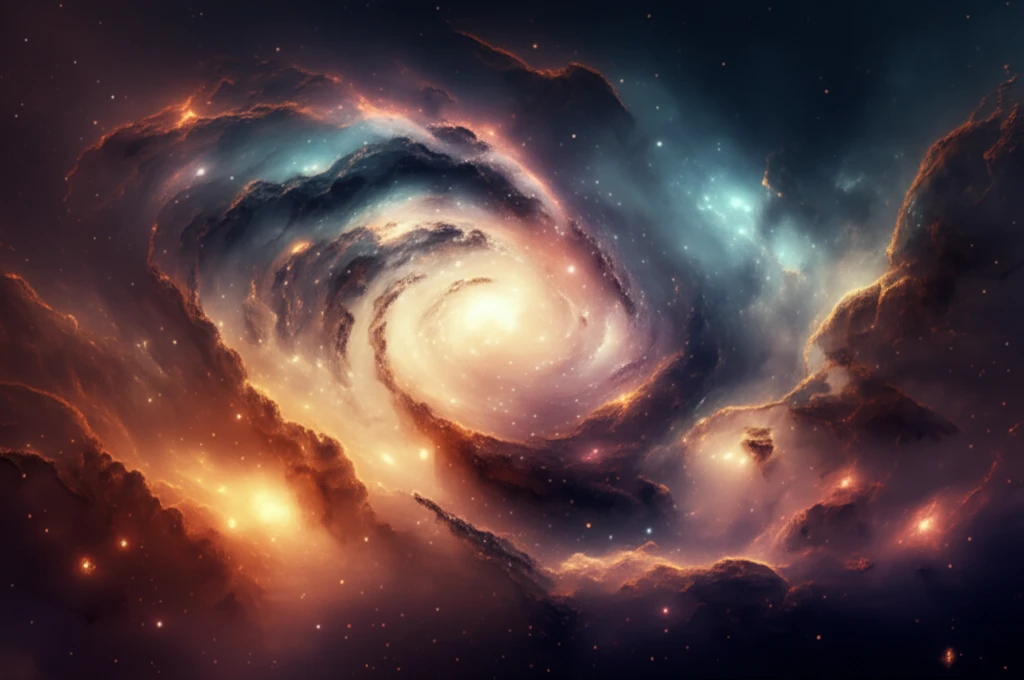
Unlocking the Secrets of Star Formation: How Turbulence Shapes Galaxies
"New research reveals the crucial role of turbulence in the far outer disks of spiral galaxies, challenging traditional models of star formation and providing insights into galactic evolution."
For decades, scientists have been captivated by the intricate dance of star formation within galaxies. Understanding how stars emerge from vast clouds of gas and dust is fundamental to grasping the evolution of galaxies themselves. A key player in this cosmic ballet is turbulence, the chaotic motion of gas within the interstellar medium (ISM).
Turbulence, characterized by swirling eddies and unpredictable flows, acts as both a sculptor and a disruptor. It can compress gas, triggering the collapse of dense cores that eventually ignite as stars. Conversely, it can also tear apart these nascent structures, preventing star birth. The balance between these opposing forces determines the rate and efficiency of star formation in different regions of a galaxy.
Now, groundbreaking research is shedding new light on the specific role of turbulence in the far outer disks of spiral galaxies. These regions, far removed from the bustling centers, present unique conditions where gas densities are low and the traditional mechanisms of star formation struggle to explain observed activity. By employing advanced statistical methods, scientists are uncovering the subtle yet powerful influence of turbulence in these extreme environments.
Turbulence: The Unseen Hand in Star Formation?

Traditional models of star formation often focus on gravitational collapse, where the weight of a gas cloud overcomes internal pressure, leading to its implosion and the subsequent birth of stars. However, this model struggles to explain star formation in the outer reaches of spiral galaxies, where gas densities are typically below the critical threshold for spontaneous collapse.
- Statistical Moments To investigate the role of turbulence, researchers have turned to sophisticated statistical techniques, focusing on higher-order statistical moments (HOS). These moments—specifically skewness and kurtosis—provide insights into the structure and dynamics of gas motions.
- Skewness Skewness measures the asymmetry of a distribution. In the context of gas density, a positive skewness indicates a greater proportion of low-density regions with a few high-density clumps. This suggests that turbulence is compressing the gas, creating these denser regions.
- Kurtosis Kurtosis, on the other hand, quantifies the “peakedness” of a distribution. A high kurtosis implies a sharp peak and elongated tails, indicating that the gas density is highly concentrated in certain areas due to turbulent compression.
What's Next for Understanding Galactic Turbulence?
While this research provides compelling evidence for the role of turbulence in star formation, many questions remain unanswered. Future studies will focus on refining these statistical methods, incorporating higher-resolution data, and exploring the interplay between turbulence and other factors that influence star birth, such as magnetic fields and cosmic rays. By combining theoretical models with observational data, scientists hope to paint a more complete picture of the complex forces that shape galaxies and drive the ongoing cycle of star formation.
